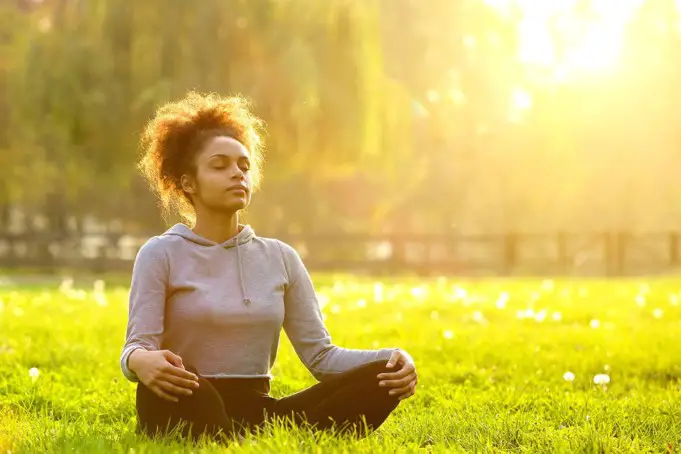If falling asleep is one of the things that you find difficult to do, I’d like you to know that you are not sailing that ship alone. In fact, the American sleep association reports that insomnia is the most common sleep disorder people deal with.
Per the report, about 30% of American adults have reported short-term problems with insomnia and another 10% have reported chronic cases of insomnia.
In a society like ours that is very busy and fast-paced, it might be very difficult for a person to take some time to unwind, rest, and finally get a good sleep.
Someone has got to do all the homework, go through the financial strain, work long hours, experience the parenting burn out and several other emotional situations within the limited 24hours of every day.
When you finally squeeze out some time to sleep, and you discover it seems complicated, it might help to focus on your breathing.
Take us to explore some interesting breathing exercises that can help to calm both your mind and body so that you become relaxed enough to fall asleep.
Things to keep in mind before getting started
Although several breathing exercises are available that you can try to achieve enough relaxation that will ultimately lead to sleep, there are a few basic principles that apply to almost all breathing exercises.
It is always the best idea for you to keep your eyes shut so that you do not get distracted easily. You must also focus on your breathing and only think about how much healing power your breath has.
The nine different breathing exercises below each have some benefits that are slightly different. Read further to see which of them is more suitable for you, and you’ll be surprised at how much sleep you’ll be getting in a short time.
1. The 4-7-8 breathing technique
This is how you can practice the 4-7-8 breathing technique easily:
- Allow your lips to part gently
- Gently exhale completely and make a breathy whoosh sound as you breath out
- As you inhale silently through your nose make sure to press your lips together. Inhale for a count of four seconds.
- Once you have inhaled, hold your breath for a count of 7 seconds.
- Exhale for another count of 8 seconds and make a whooshing sound throughout the 8 seconds.
- When you first begin the exercise, you can repeat up to four times then gradually repeat as many as eight times.
This breathing exercise technic was created by Dr Andrew Weil as one of the variations an ancient yogic technique is known as pranayama that helps people to relax and also helps to replenish oxygen in the body.
2. The Bhramari pranayama breathing exercise
The steps below will help you correctly perform the original Bhramari pranayama breathing exercise technic:
- Keep your eyes shut and gently breathe in and out deeply
- Cover both ears with your hands
- Let each of your index fingers is placed above your eyebrows and have the other fingers rest over your eyes
- Put some gentle pressure on both sides of your nose but focus majorly on your eyebrow area.
- Keep your mouth closed as you slowly breathe out through your nose and make the humming “Om” sound at the same time.
- Repeat the entire process five times
The good thing about the breathing exercise is that it helps to quickly reduce breathing and your heart rate which makes it good for people with elevated blood pressure levels and also helps to calm you enough for your body to sleep.
3. The three-part breathing exercise
To practice this breathing exercise, follow the three steps below:
- First take a long, deep inhale.
- Slowly exhale fully but make sure to focus on your body and how it feels as you exhale
- Do this a few times then slow down the rate of your exhale so that it becomes twice as long as your inhale.
This technic is very simple, and that makes it one of the most practised.
4. The Diaphragmatic breathing exercise
To do this breathing exercises follow these steps:
- Lie flat on your back and bend your knees over a pillow or just sit in a chair
- Place one of your hands flat on your chest and place the other on your stomach
- Purse your lips and gently breathe through the pursed lips.
- In the end, you want to be able to easily breathe in and out without having to move your chest.
This technique will help to slow your breathing and reduce your oxygen needs as it also strengthens your diaphragm.
5. The alternate nasal breathing exercise
The alternate breathing exercise is also called Nadi shodhana pranayama. Below as simple steps to correctly carry out this exercise:
- Begin by sitting with your legs crossed
- Next, you should place your left hand on your knee and place your right thumb against your nose
- Fully exhale and then close your right nostril.
- Slowly inhale through your left nostril.
- Close the left nostril and gently exhale through the right one.
- Continue the routine for about five minutes then finish by exhaling through the left nostril.
There have been a few reports that individuals who tried some nasal breathing exercises were less stress after the exercises.
6. The Buteyko breathing
To practice the Buteyko breathing, follow this technic:
- Sit on your bed with your mouth closed slightly (do not purse your lips) and proceeded to breathe through your nose at your natural pace for exactly half a minute.
- Breathe once, a bit more intentionally through your nose in and out.
- Pinch your nose closed with your forefinger, and your thumb gently and also keep your mouth closed till you feel the need to take another breath.
- Let your mouth remain closed as you take another breath in and out through your nostrils.
Most people don’t realise when they are hyperventilating. That is why this exercise will help you to reset back to a normal rhythm of breathing.
7. The Papworth method
When doing the Papworth breathing method you focus on your diaphragm so you can breathe more naturally:
- If you are doing this with the intention to fall asleep, sit straight up in bed.
- Take deep breathes in a methodical way in and out. With each inhales and through your mouth or nose count from 1 to 4. Ensure to exhale through your nose only.
- Focus your attention on the rising and falling of your abdomen, then listen for the sounds of your breath to come from your stomach. If you have the habit of sighing and yawning, this breathing exercise will help you reduce it.
8. Kapalbhati breathing exercise
Kapalbhati breathing also known as the pursed lips breathing exercise involves the four steps below:
- Breathe in through your nose deeply, as though you smell something nice.
- Next, plucker your lips as though you are going to blow out some air.
- Exhale thrice more slowly than you inhaled through your pursed lips
- Repeat the process till you become calm enough and feel sleepy
This breathing technic helps to improve ventilation by taking out excess carbon dioxide from your system and relieve shortness of breath.
9. The box breathing
During this breathing exercise, you want to focus completely on the oxygen you’re bringing in and exhaling:
- Sit down with your back straight and take a deep breath, then try to expel all the air in your lungs all at once as you exhale.
- Slowly inhale through your nose as you count from 1 to 4 in your head. With each number you count, fill your lungs with more air.
- Once you have inhaled enough, hold your breath and proceed to count from 1 to 4 in your head.
- Exhale slowly through your mouth as you focus on getting all the oxygen out of your lung.
This breathing method is common during meditation. It helps you to stay calm but mentally alert.
Any of the breathing exercises you decide to engage in from the above listed is fine. Just ensure that you do not get distracted by any external factor while you are at it so you can enjoy all the benefits.












